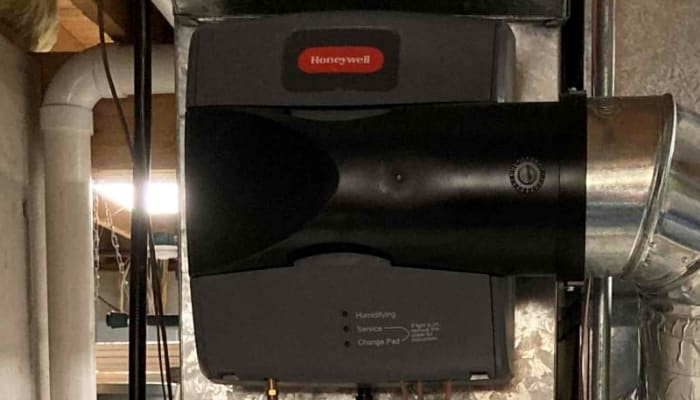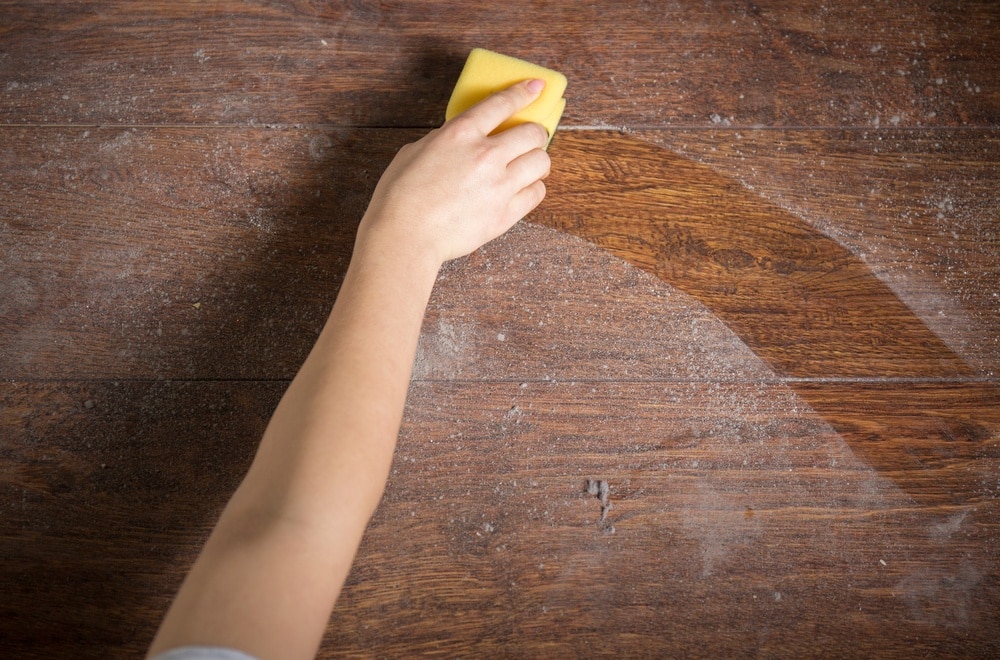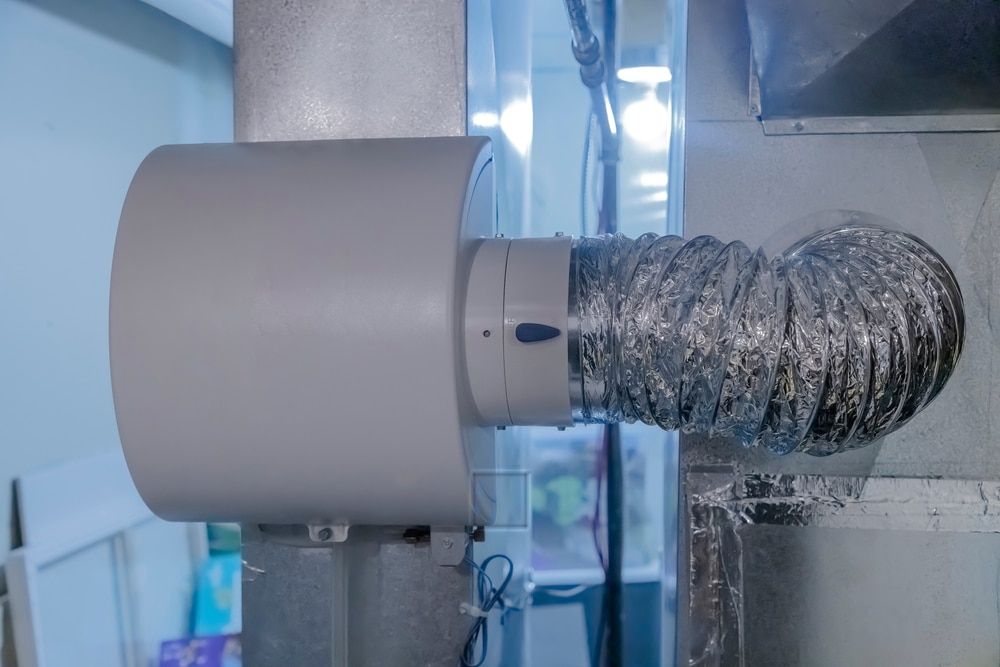Humidifiers and White Dust: Causes and Ways to Prevent

Table of Contents
Why There is White Dust Around Your Humidifier and What You Can Do About It
If you noticing a white dust around your home, your ultrasonic humidifier may be the culprit. To help you maintain a clean house, we have created an outline of the main causes of white dust on furniture and ways to minimize it.
What Causes the White Dust
The use of hard water in portable humidifiers has been known to cause “white dust” that appears on surfaces in the home, and can cause problems with HVAC systems, such as plugging the filter. This then restricts air flow, and prevents your heating system from running as it should.
To prevent white dust from collecting in your house, you can use distilled water in your portable humidifier. Some humidifiers also have demineralization cartridges, cassettes, or filters that can help with removing minerals from the water before it is dispersed into the air.
The white dust is a by-product of minerals in water, mostly calcium and magnesium. To reduce or eliminate white dust, using distilled water is recommended.
Is The White Dust Harmful?
Recent studies by the EPA and Consumer Product Safety Commission have shown that ultrasonic and cool mist humidifiers can disperse materials, such as microorganisms and minerals, from their water tanks into indoor air. Limited information is available on the growth and dispersal of microorganisms by humidifiers.
Proper care and cleaning of the ultrasonic and cool mist humidifiers are important for reducing potential exposure to microorganisms, such as bacteria and molds. Breathing mist containing these pollutants has been implicated as causing a certain type of inflammation of the lungs.
According to the EPA, the Federal government has not concluded that the dispersal of minerals by home humidifiers poses a serious health risk, but using water with lower mineral content will reduce exposure to these materials. Evaporative humidifiers are not expected to disperse substantial amounts of minerals.

Things You Can Do to Reduce White Dust from Your Humidifier
Our team of professionals are seeing significant issues in homes due to clogged HVAC filters caused by white dust from humidifiers. A standard 1” pleated filter can be completely plugged within a few days, and a 5” filter within a month or two, when the 1” filters should last, on average, 60-90 days. The 5” filters should be able to be changed annually.
A clogged filter means your HVAC system can’t properly move air. Restricted airflow can cause the unit to overheat. This will add stress to the blower motor and heat exchanger. It will make the AC coil, which is in the plenum above your furnace, freeze, which will cause water to dump down your furnace, and could damage the electronics, heat exchanger, blower, and gas valve.
Imagine putting your thumb over the end of a garden hose- the water has to go somewhere, so due to the restriction in flow, it creates more pressure. This is similar to air trying to get through a clogged filter.
If your furnace (or air conditioner, when the weather cooperates) doesn’t seem to be running right, or at all, one of the first things to check is the filter. Make sure the filter is clean of dust and debris. If you’re not sure when the filter was last replaced, go ahead and replace it. Write the date it was changed on the edge with a permanent marker, so it’s easy to remember.
If you need filters, you can order them one time, or set up automatic delivery, on our website HERE!

Types Of Humidifiers and How They Work
Humidifiers in the home serve two main purposes: to increase or maintain the humidity in a certain area, and/or easing symptoms of an illness. According to a 2012 report from the Environmental Protection Agency (EPA), portable humidifiers are available in a few options, including ultrasonic, cool mist, and warm mist.
Whole-home humidifiers consist of bypass, fan-powered, and steam technologies. As of 2012, whole-home humidifiers made up only 4% of the entire residential humidifier market. Portable humidifiers are typically used in one room, or possibly multiple rooms in a smaller space.
Warm Mist Humidifiers
Warm mist humidifiers use a heating element within a reservoir to heat water, which is then released into the surrounding area in vapor form.
Cool Mist Humidifiers
Cool mist humidifiers use a fan to blow water toward a diffuser or wick, which creates a fine mist.
Ultrasonic Humidifiers
Ultrasonic humidifiers use a piezo-electric device inside a basin of water to create high-frequency vibrations to create water vapor, and a fan propels the vapor outward.
Portable Humidifiers
Portable humidifiers have built-in humidistats, and require regular cleaning.
Whole-House Humidifiers
Whole-home humidifiers, which are installed by HVAC professionals, connect to the ductwork of a forced-air HVAC system. These humidifiers use the furnace fan to deliver humidified air throughout the house through the existing ductwork. Different sizes are available, based on the needs of the home, and can humidify up to 6,000 square feet.
Maintenance includes replacing the filter, or water pad, every six months. These humidifiers connect directly to a water source, and are controlled automatically with a humidistat.
Read More: Top Reasons Your Air Conditioner is Blowing Warm Air
Bypass Humidifiers
Bypass humidifiers utilize a pad that is periodically sprayed with water as it is exposed to the airflow in the HVAC system. Fan powered humidifiers have a pad with water running over it which is exposed to the air flowing through the HVAC system.
Steam humidifiers heat a container of water with a heating element, the steam produced is then injected into the air flowing through the HVAC system. The average lifetime of a whole-home humidifier is around 10 years, though it can vary based on maintenance and care.
How Often to Clean Your Humidifier
The EPA recommends emptying the tank, wiping all surfaces dry, and refilling the water daily to reduce any growth of microorganisms, and cleaning every third day. Empty the tank and use a brush or other scrubber to clean it.
Remove any scale, deposits, or film that has formed on the sides of the tank or on interior surfaces, and wipe all surfaces dry. Remember to unplug the humidifier before performing any care or maintenance! The average lifetime of a portable humidifier is 3-5 years.

Professional Heating, Air Conditioning, and HVAC Repair Services
Whole home humidifiers are a relatively cost-effective way to eliminate the work, and the worry, of portable humidifiers. There no filling water tanks, no having to turn it off and on, no mold or minerals being distributed, and better control over humidity. The humidifier is hooked directly to a water line.
The excess water drains via the furnace drain, so no stagnant water is present. The pad needs to be changed yearly, but other than that, minimal maintenance is required. The humidifier can be checked by your HVAC professional when doing regular maintenance on your HVAC system.
Automatic humidity controls can be installed to help prevent window condensation, and even better regulate humidity in the home, which can also help the home feel warmer. For those with larger homes or higher humidity needs, steam humidifiers may be an option for you.
Our team offers reputable HVAC repair services in Menomonie, WI and are available to help you install a whole-home humidifier on your property. We also offer a variety of other home comfort solutions including air conditioning repair, furnace maintenance, heat pump installation and boiler repair. Call us at (715) 283-4422 to speak with a service advisor.
